Behold: my tasty homemade gluten-free potstickers (a.k.a. pot stickers) are paleo, grain-free, nut-free, dairy-free, and egg-free, and they’re just as deliciously authentic as you remember! They’ll even satisfy your dumpling-lovin’ non-paleo pals! (I don’t think these potstickers are Whole30 because they fall under “The Pancake Rule.”)

Table of Contents
- These gluten-free potstickers are worth the work!
- What’s the best plan of attack to make these potstickers?
- Day One: Make the filling
- Day Two: Make the dough, form the dumplings, and cook ’em
- (Optional) Day Three: Fry the dumplings
- Can you use a different meat for the potsticker filling?
- Can I change the vegetables in the potsticker filling?
- Can I use a different flour to make the potsticker wrappers?
- How do I make these potstickers keto-friendly or low carb?
- Do I have to use a tortilla press to make the potsticker wrappers?
- What if my Paleo Potstickers look ugly?
- Can you freeze the potstickers?
- Ingredients
- For the potsticker filling:
- For the gluten-free dumpling wrapper:
- For cooking the dumplings:
- For the dipping sauce:
- How to make paleo dumplings
- More paleo Asian appetizer recipes
- Authentic Gluten-free Potstickers (Paleo, Nut-Free, Grain-free, Soy-free) Recipe
These gluten-free potstickers are worth the work!
There’s a catch, though: these homemade gluten-free potstickers aren’t exactly a cinch to make. I’m usually all about taking shortcuts to deliciousness (e.g. Ollie’s Cracklin’ Chicken), but sadly, we can’t always cut corners or plop stuff into an Instant Pot and hope for the best. My recipe for Paleo Potstickers requires more time and elbow grease than my typical creations, but believe me: these pan-fried Chinese dumplings are well worth the effort. Besides, like always, I’m right here to guide you through the cooking process with step-by-step photos!
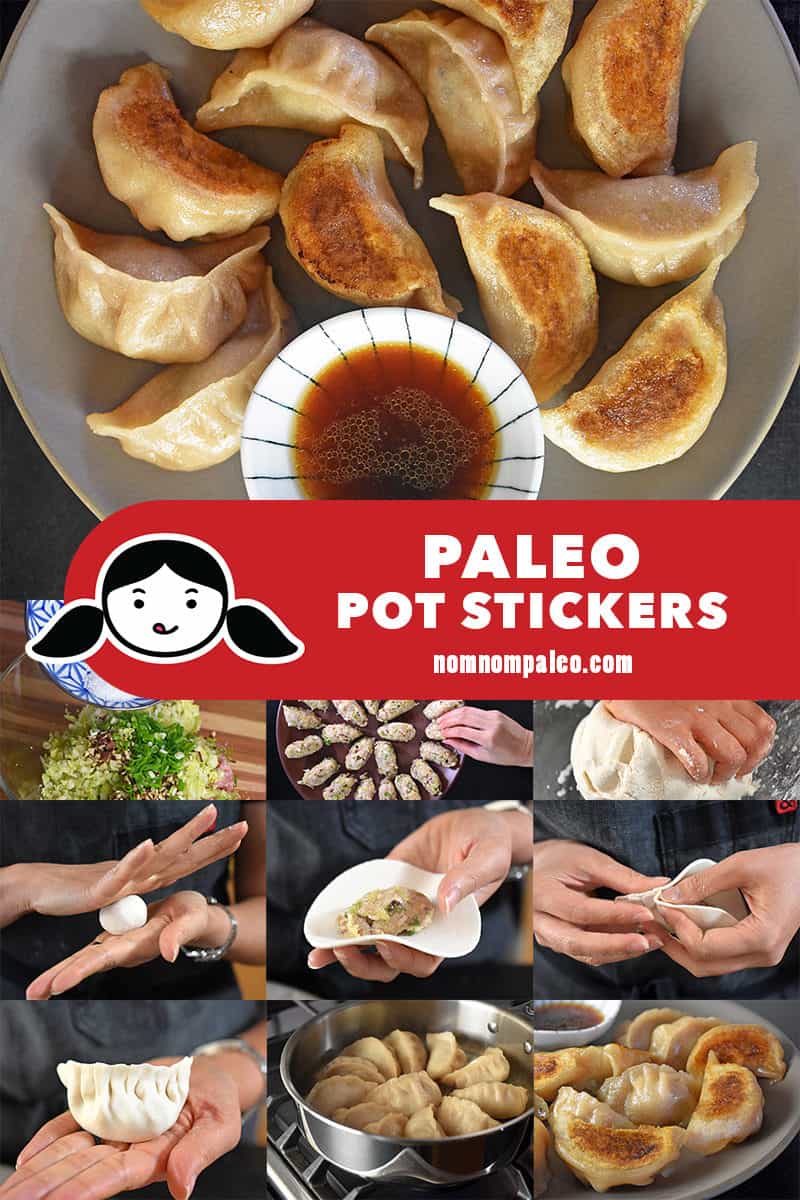
It’s no exaggeration to say that homemade dumplings are the physical embodiment of the love Asian moms have for their kids. Don’t believe me? Watch the Pixar short film Bao or the blockbuster hit Crazy Rich Asians—your eyes will spring a leak when you see how dumplings symbolize all the warm and fuzzy things Asian parents never verbalize to their children. Dumpling-making is a tradition that’s passed down from generation to generation. I still smile when I think about wrapping dumplings with my mom and grandma at our kitchen table, and happily gobbling ’em up as soon as they left the frying pan. Who could resist these delicate little purses of tender, meat-filled dough, sizzled to golden perfection and dipped in a vinegary sauce?

After going paleo a decade ago, though, I refused to make a grain-free version of my favorite childhood comfort food. Despite gentle, consistent prodding from my hubby through the years, I just didn’t think I could do justice to my beloved pot stickers. That is, until one of my loyal Nomsters emailed to tell me that she successfully made paleo-friendly pot stickers using my Paleo Scallion Pancake dough to make dumpling wrappers! That finally tipped the scale. I dived headfirst into Paleo Pot Sticker experimentation, and at long last, I’m thrilled to report that I get to eat homemade pot stickers again—and you do, too!
What’s the best plan of attack to make these potstickers?
Like I said, this recipe’s not super-simple, so unless you feel like spending all day in the kitchen, I recommend breaking this recipe up into a two (or three) day process:
Day One: Make the filling
Soaking the dried shiitake mushrooms and salting and draining the Napa cabbage take time, so it’s best to make the filling a day or two in advance. Keep the filling in the fridge in a sealed container for up to two days.
Day Two: Make the dough, form the dumplings, and cook ’em
This is the main cooking day, so schedule it for a weekend or holiday. Pro tip: Don’t make the dough ahead of time ’cause it tends to get rock-hard in the fridge. Instead, conscript your friends and family to help you assemble the pot stickers. Making the wrappers and pot stickers will go by a lot quicker with extra hands.
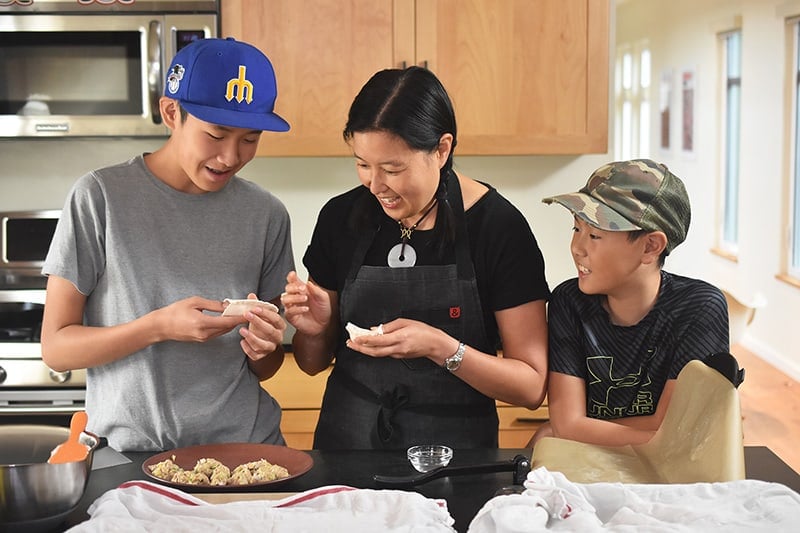
Once you fry up the pot stickers, your helpers can help you eat ’em up, too!
(Optional) Day Three: Fry the dumplings
If you don’t want to cook the dumplings on the day you wrap the pot stickers, you can always save them for later. Freeze them for up to two months or refrigerate them for up to two days before steam-frying them up.
Can you use a different meat for the potsticker filling?
Yes! Ground pork is the traditional meaty filling for Chinese pot stickers, but I’ve used ground chicken thighs, dark turkey meat, and ground beef—all with great success. But be careful: Don’t go super lean with the ground meat because your filling won’t taste as good or be as juicy.
Can I change the vegetables in the potsticker filling?
Dried shiitake mushrooms have more umami than their fresh counterparts, but you can definitely sub in fresh ones (or leave them out entirely if you’re a mushroom hater). Can’t find Napa cabbage at your grocery store? Substitute bok choy. I’ve also used diced kale leaves and regular green cabbage and my paleo pot stickers still turn out tasty. Just don’t skip the salting and draining of the greens unless you’re a fan of water-logged and mushy filling.
Can I use a different flour to make the potsticker wrappers?
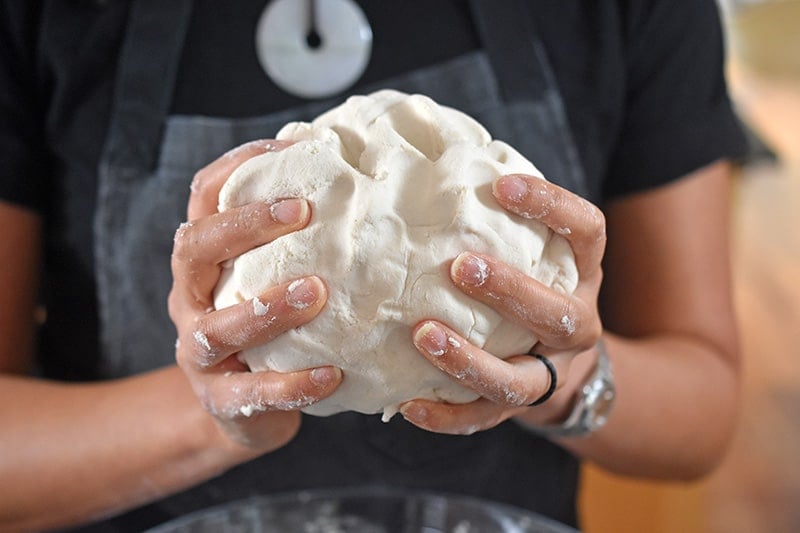
Frankly, I’m not sure what’ll happen if you substitute another flour for the cassava and/or arrowroot in this recipe. I worked really hard to create a gluten-free flour mixture that didn’t use rice flour, corn starch, potato starch, or xanthan gum. I don’t recommend it ’cause alternative flours are pricey, and I’d hate for you to be disappointed with the results. Of course, if you do come up with a successful substitute, please let me know in the comments so others can benefit!
How do I make these potstickers keto-friendly or low carb?
Just fry up the filling as meatballs! Or you can make my super quick and tasty Potsticker Stir-Fry!
Do I have to use a tortilla press to make the potsticker wrappers?
No, but it does make the process easier and way less tedious! If you don’t have a tortilla press, you can use a heavy-bottomed pan or rolling pin to flatten the wrappers. But just get a tortilla press, people. They’re not expensive, and once you have one, you can use it to make my Paleo Scallion Pancakes and Fried Green Plantains (a.k.a. Patacones or Tostones), too!
What if my Paleo Potstickers look ugly?
Don’t worry about it! Practice makes perfect. Besides, wouldn’t you rather have some ugly-looking pot stickers than no pot stickers at all? Click here for a good video on how to fold pot stickers the right way. Also, here’s a graphic that Henry drew up that you might find helpful:
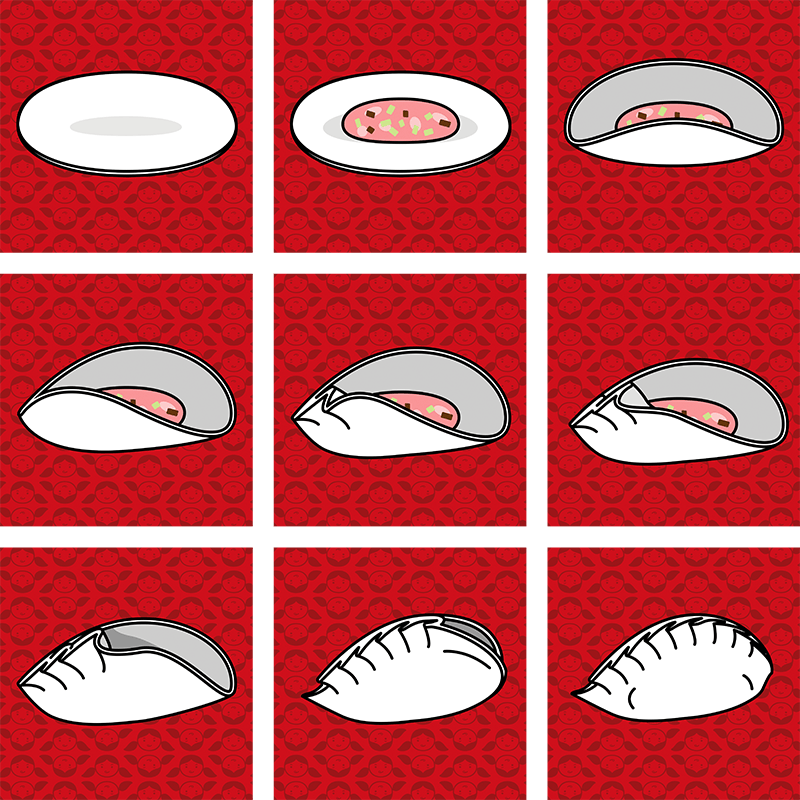
Can you freeze the potstickers?
Yes! I definitely recommend freezing the uncooked extra pot stickers. If you’re already going to take the time to make pot stickers, you should make extra anyway. It’s easy to cook them directly from the freezer: just steam-fry them the same way you’d cook up freshly-wrapped dumplings according to the recipe below—but for 7 minutes instead of 5.
Ingredients
For the potsticker filling:
- Dried shiitake mushrooms
- Small Napa cabbage
- Diamond Crystal kosher salt (use half the amount if using Morton’s kosher salt or a fine grain salt),
- Ground pork
- Chicken broth
- Minced scallions (green onions)
- Minced fresh garlic
- Ground ginger
- Ground white pepper
- Coconut aminos (I use this in place of tamari or soy sauce to keep this recipe soy-free)
- Toasted sesame oil
For the gluten-free dumpling wrapper:
- Cassava flour: I use Ottos’ cassava flour for the best dumpling wrappers
- Arrowroot powder
- Diamond Crystal brand kosher salt
- Boiling water
For cooking the dumplings:
- Avocado oil for pan-frying
For the dipping sauce:
- Rice vinegar
- Coconut aminos
- Toasted sesame oil
- Paleo Sriracha or crushed red pepper (optional)
How to make paleo dumplings
Start by making the filling. Soak the shiitake mushrooms in a bowl with water for at least 30 minutes or until completely softened. You can also soak the mushrooms for up to 8 hours in the fridge.
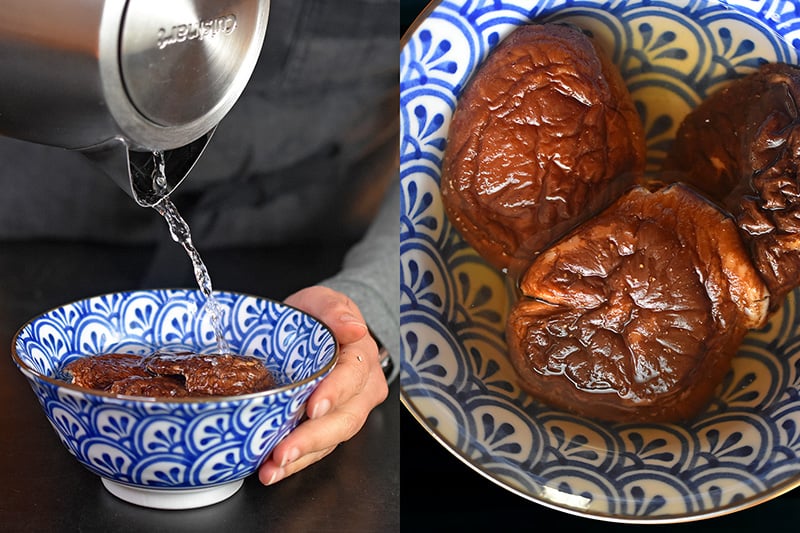
While the mushrooms are soaking, finely chop the Napa cabbage. (Yes, you can pulse it in a food processor if you don’t mind dirtying an appliance.)
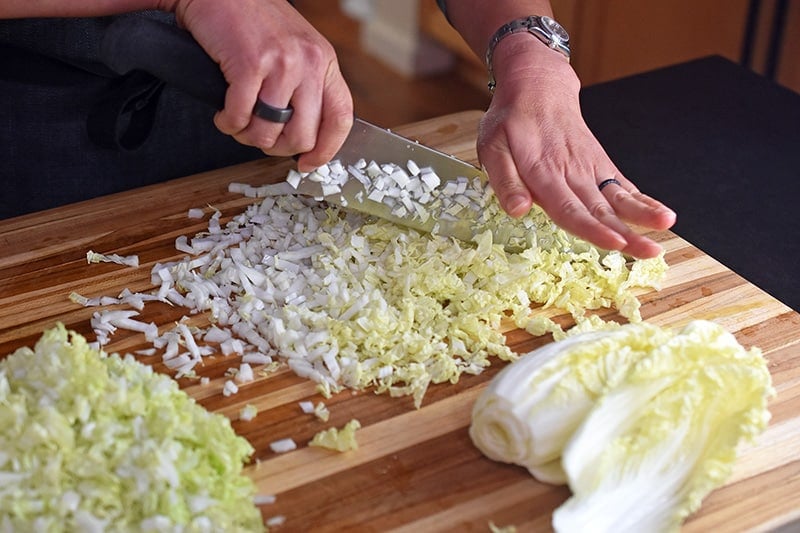
Combine the finely chopped cabbage and 2 teaspoons of Diamond Crystal kosher salt in a large bowl and toss well. (Only use half the amount of salt if using Morton’s kosher salt or a fine grain salt).
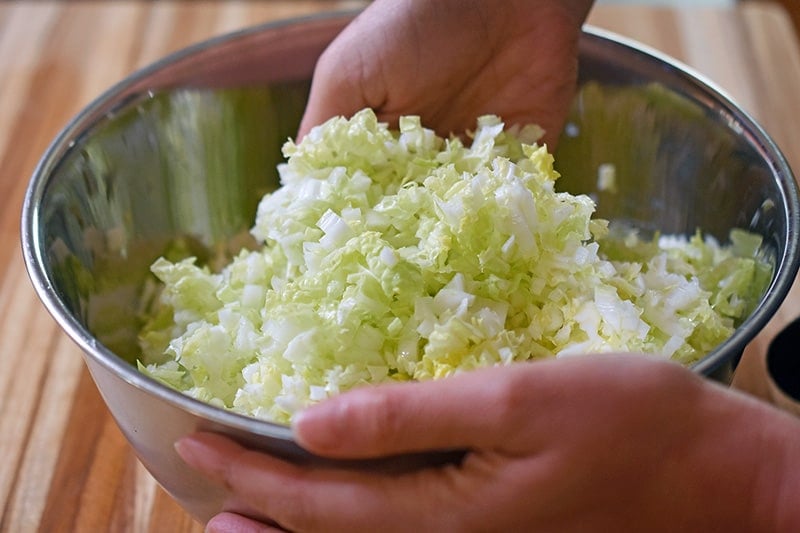
Transfer the salted cabbage to a fine mesh strainer or colander and set it over a bowl.

Let it stand at room temperature for at least 30 minutes or in the fridge for up to 8 hours.
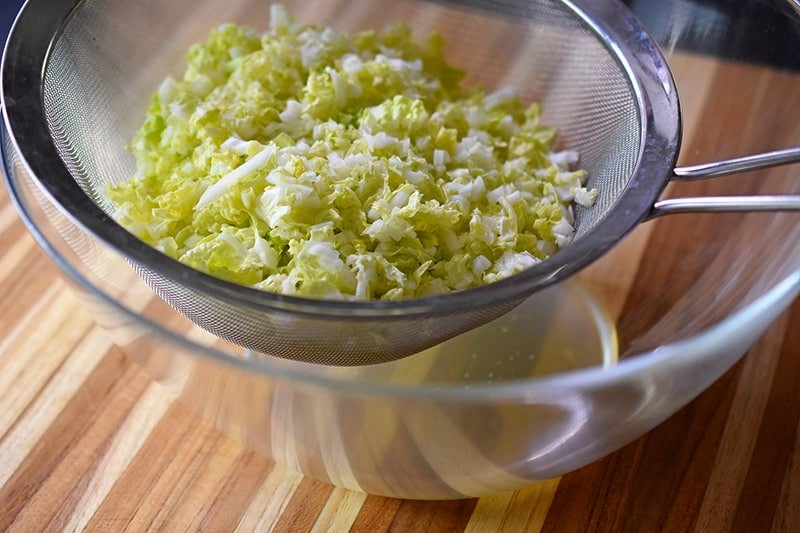
When you’re ready to make the filling, grab the soaked shiitake mushrooms and squeeze out the excess liquid. Remove and discard the tough stems and finely dice the caps.
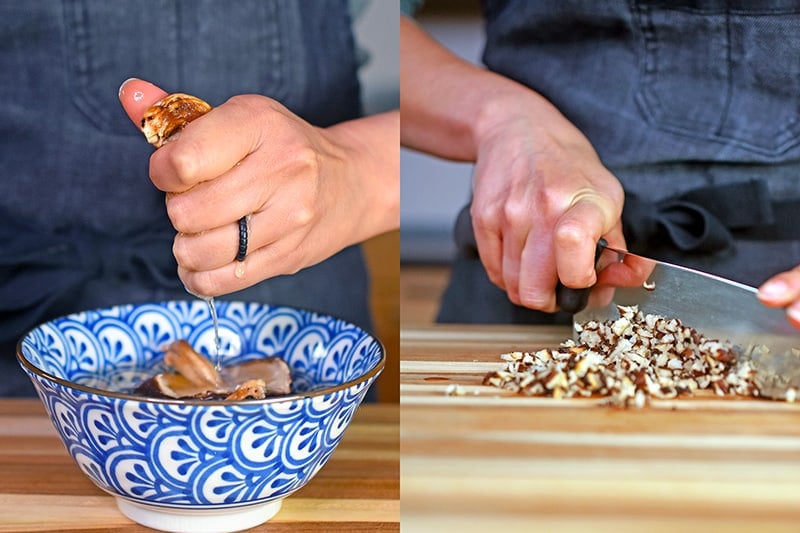
Dump the salted cabbage onto a large piece of cheese cloth or clean dish towel. Gather up the edges…
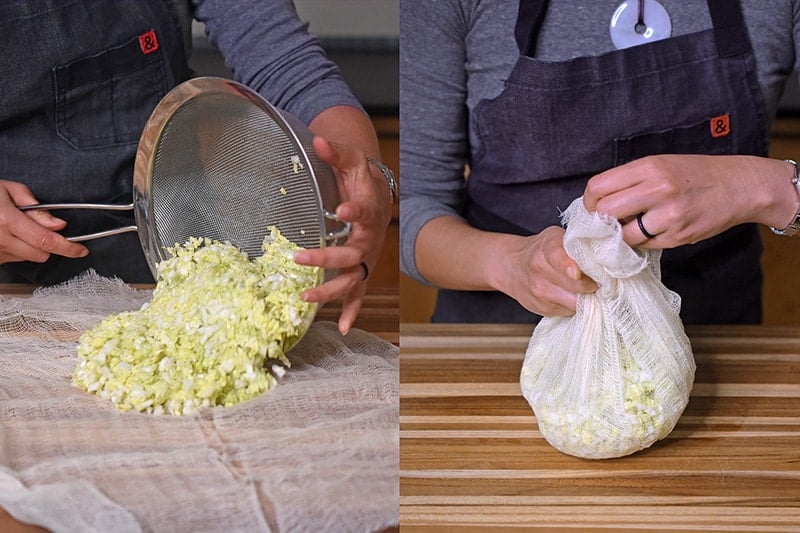
…and squeeze and twist the cabbage bundle to wring out as much liquid as possible. You should end up with about 1 cup of cabbage.
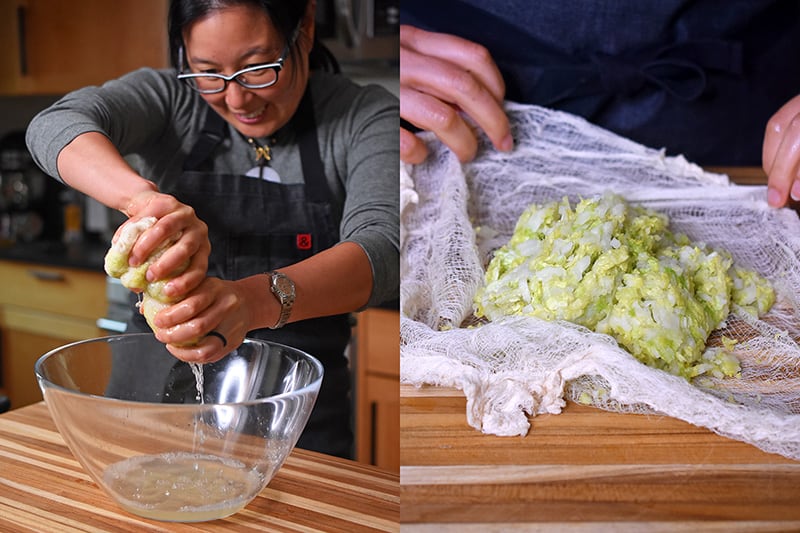
In a large bowl, use your hands to mix the ground pork with the chicken broth until the liquid is incorporated into the meat.
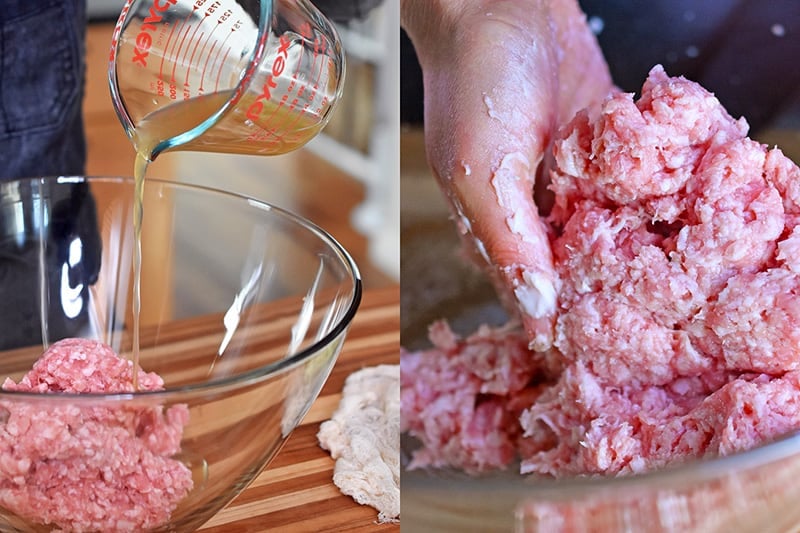
Combine the pork/broth with the drained cabbage, mushrooms, scallions, minced garlic, ground ginger, ground white pepper, and the remaining teaspoon of Diamond Crystal kosher salt.
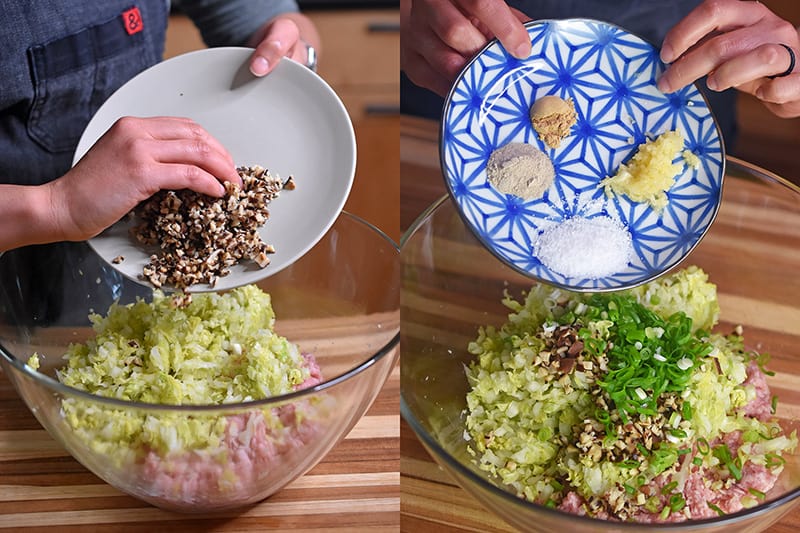
Add the coconut aminos and sesame oil, and use your hands to knead the filling until everything is well-mixed…
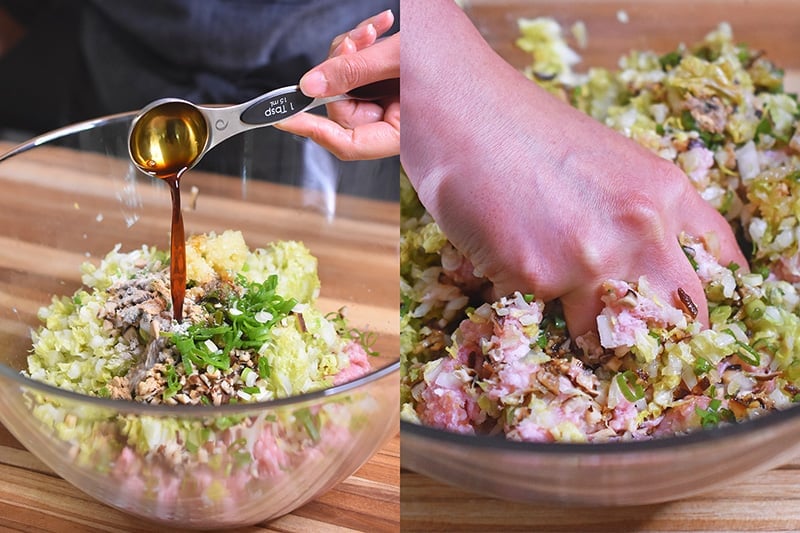
…and the filling starts to feel tacky and sticky. To check the seasoning, fry up a tiny patty of the meat mixture in a pan and taste it. Add more salt if needed. At this point, you can store the filling in a sealed container in the fridge for up to two days.
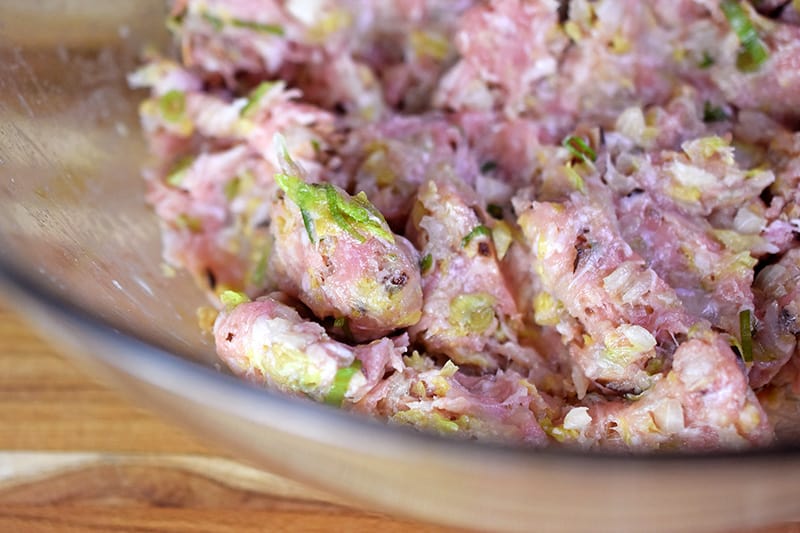
When you’re ready to make the wrapper dough, measure out the cassava flour, arrowroot powder, and Diamond Crystal kosher salt and dump them all in a large mixing bowl. Pour in about 2 cups of boiling water and stir it in. Once the water cools down just enough to touch, use your hands to knead the dough.
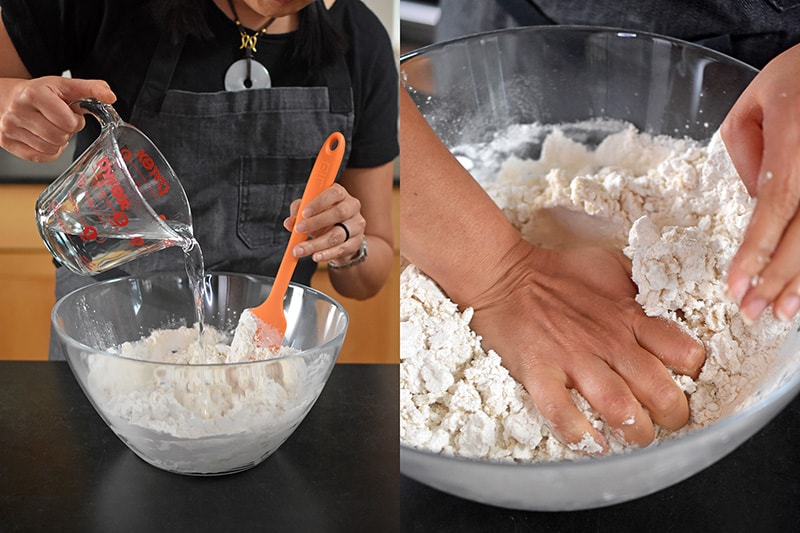
Continue adding a little boiling water at a time and knead it until you form a springy, not-sticky dough. If it seems extra dry, add a touch more water, but watch out—you don’t want a wet, soft dough, or you’ll have trouble working with it. If it gets too wet, knead in a bit more cassava flour. When in doubt, err on the side of being a little stickier than drier.
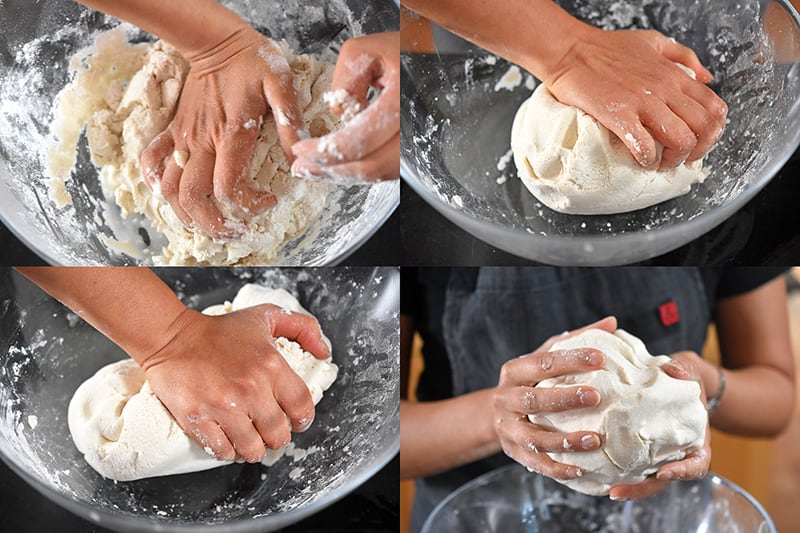
Divide the dough in thirds, and then divide each piece in half to get 6 dough balls. Next, divide each of the 6 dough balls in half, then in half two more times. If you followed my instructions correctly, you should end up with 48 equal-sized portions. (Split the dough ball into 3 balls → 6 balls → 12 balls → 24 balls → 48 balls)
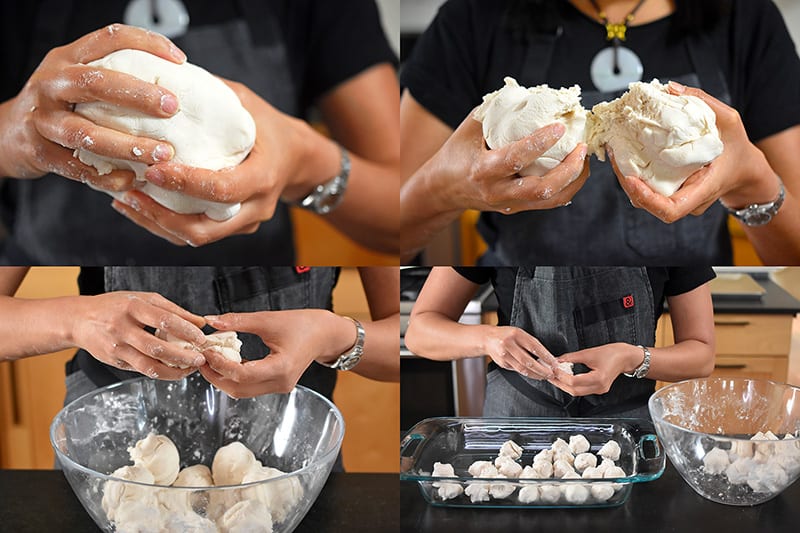
Cover the dough balls with a damp kitchen towel to keep them from drying out.
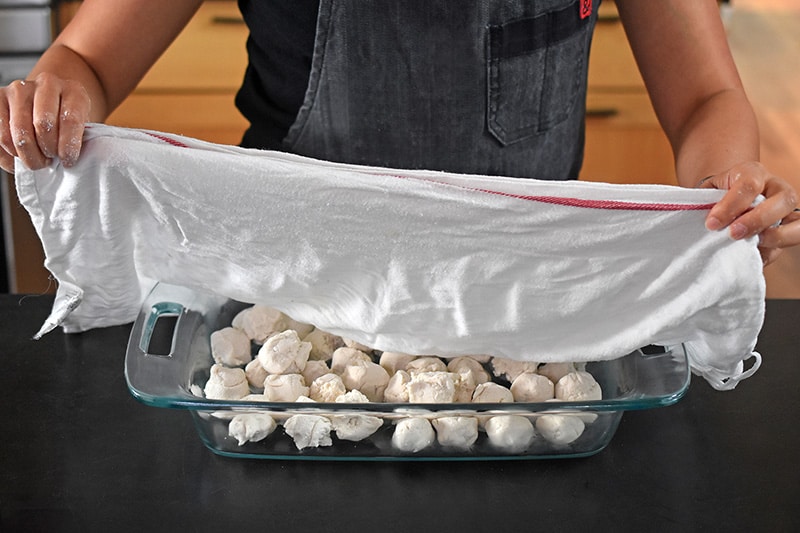
Now, it’s time to gather your friends and family to help assemble the wrappers and pot stickers! Assign someone to portion out the fillings—this step may seem unnecessary, but it’ll ensure that you have exactly enough filling for the wrappers. Scoop out a scant tablespoon of filling and place the oval-shaped filling on a plate.
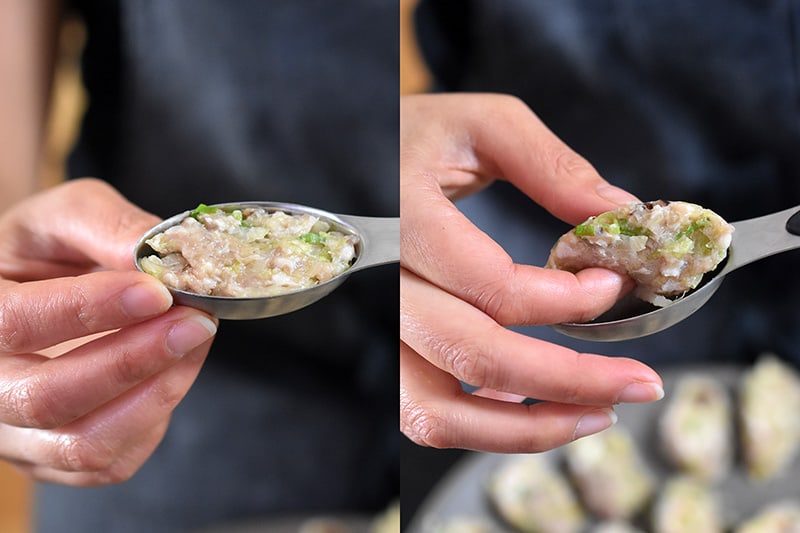
Repeat until you have 48 equal oval-shaped Paleo Pot Sticker fillings.

Next, let’s make the wrappers! Grab a tortilla press, some parchment paper, a rimmed baking sheet, a damp kitchen towel, and a small bowl of water. Take one of the dough balls and dab it with a little water if it feels dry. Then, use your hands to roll it into a round ball.
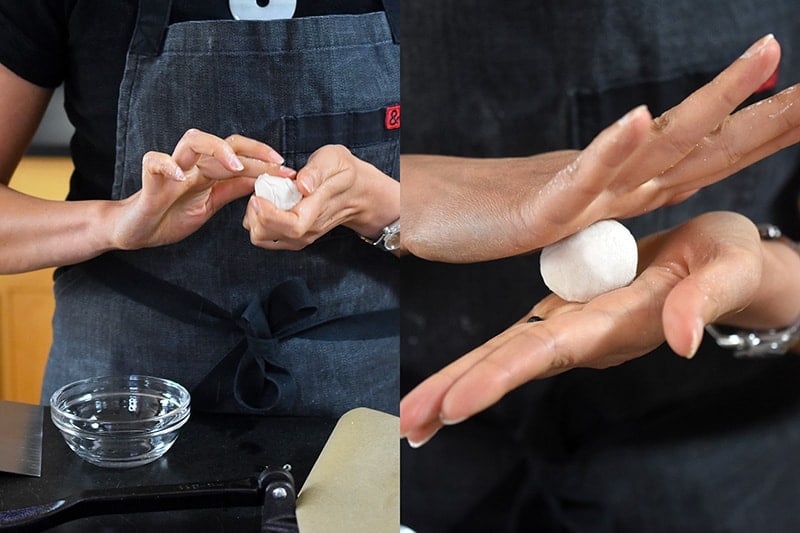
Place the dough ball on the tortilla press in between pieces of parchment paper, and smush it flat. The wrapper should be very thin and about 3½-inches in diameter.

Put the pre-scooped filling into the middle of the wrapper. Make sure your fingers are clean or it’ll be hard to fold properly!

Fold up the sides of the wrapper around the filling like a taco. Use your thumb to keep the filling in place and use your other hand to crimp one side of the pot sticker as you seal the top.
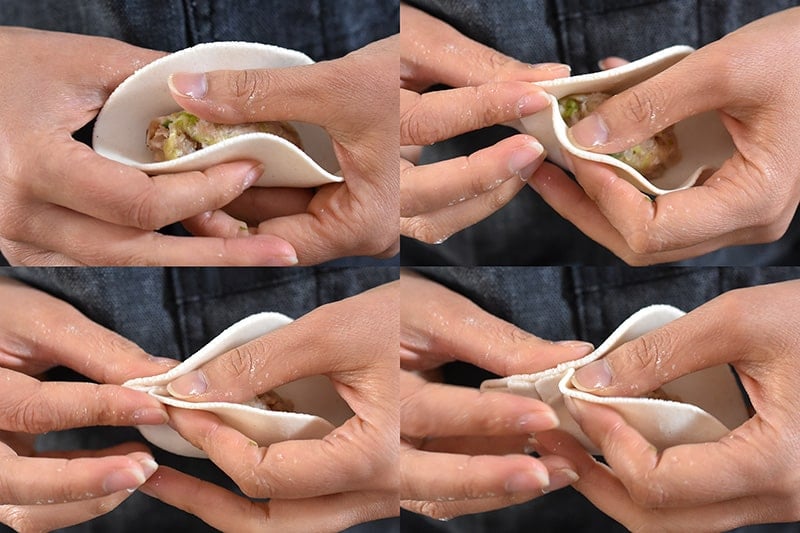
Continue pleating only one side of the wrapper and sealing the top edge of the pot sticker until you reach the other side. Use your fingers to securely seal the top of the pot sticker, dabbing on a little water if the edges feel dry.
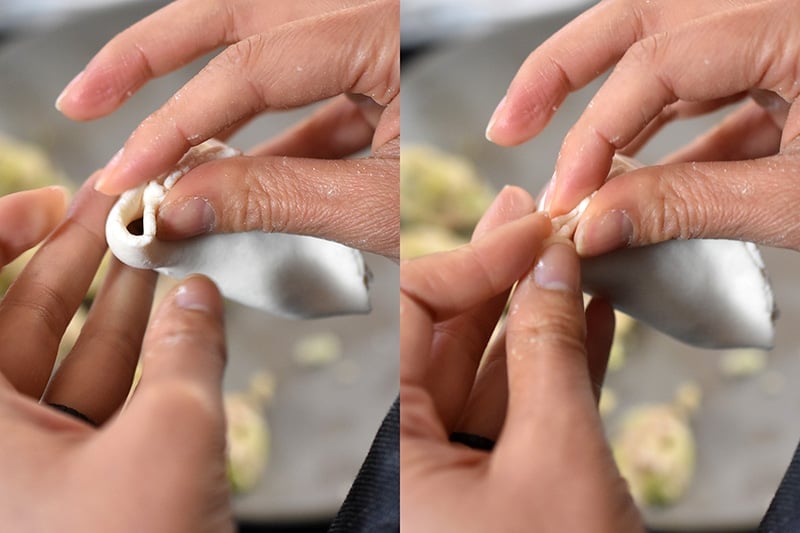
The finished pot sticker should have a flat bottom and form a crescent with the pleats on the outside.

Place the pot stickers on a parchment lined rimmed baking sheet and cover them with a damp kitchen towel to keep them from drying out.
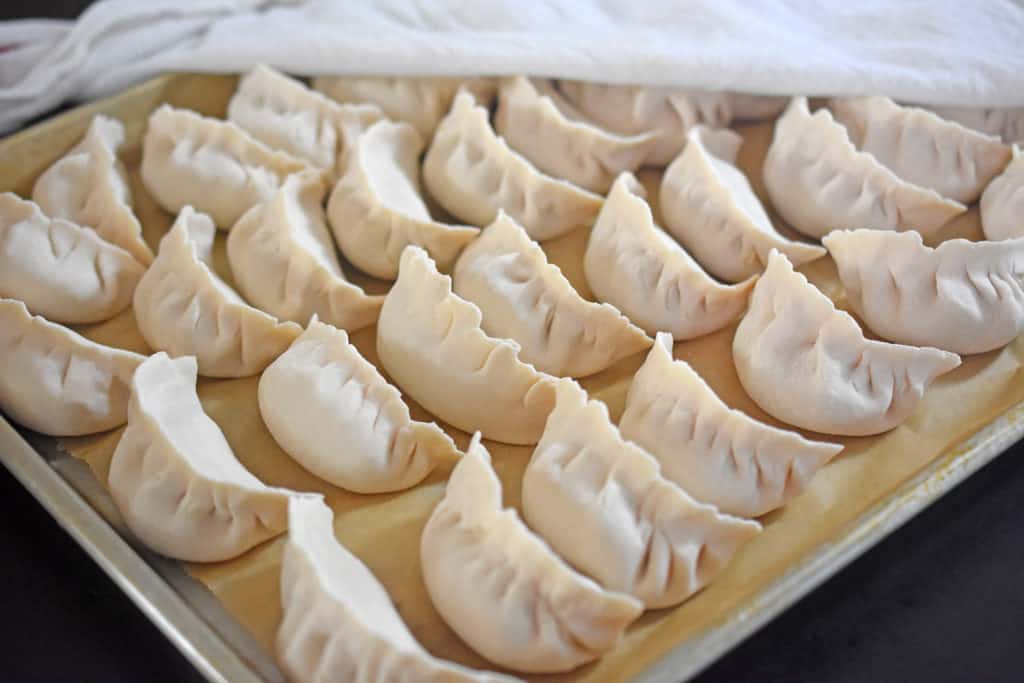
Remember: the more people helping, the faster it will be.
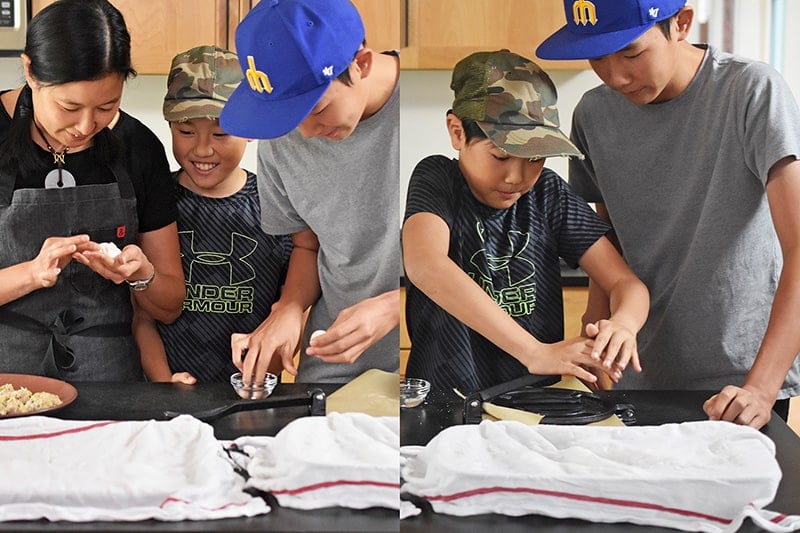
Continue making wrappers and wrapping pot stickers until you’re finished. You should end up with 48 Paleo Pot Stickers!
At this point, you can either freeze the pot stickers or fry them up. I freeze mine in a food-safe freezer bag, making sure they’re in a single layer. You can keep the dumplings in the freezer for up to 2 months, and then fry them directly from the freezer when you’re ready to eat! Win-win!
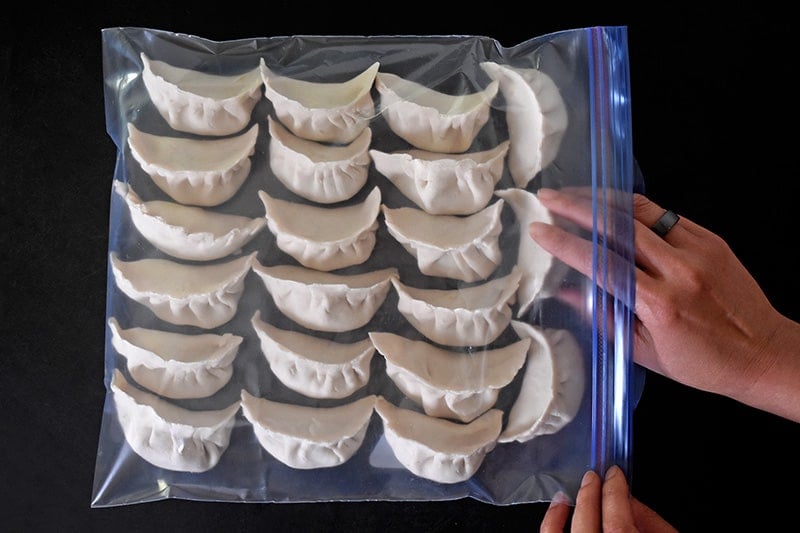
Now, it’s time to fry up the pot stickers. Heat a 10-inch heavy-bottomed skillet over medium-high heat. When the pan is hot, swirl in a tablespoon of avocado oil or your favorite high temperature cooking fat. Place as many pot stickers into the pan that’ll fit in a single layer.

Fry the pot stickers until the bottoms are golden-brown, about 2 minutes.
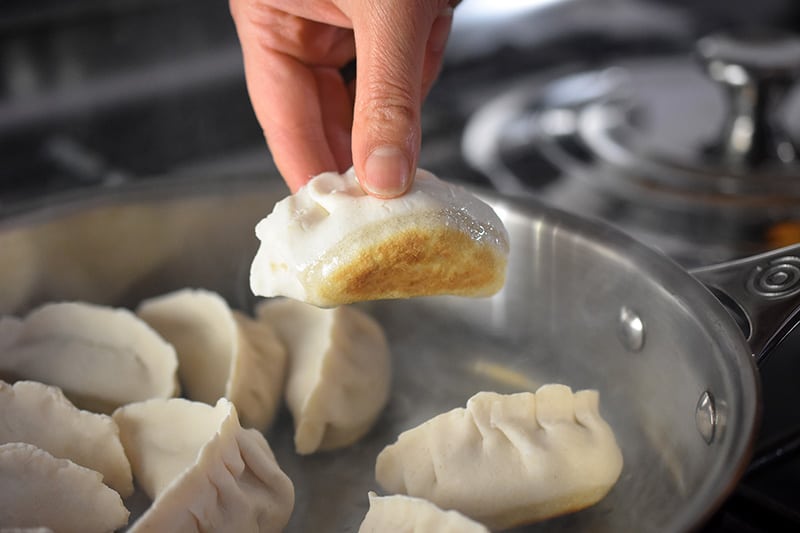
Carefully pour in a ½ cup of boiling water, and cover the skillet with a tight-fitting lid. Turn the heat down to medium and steam-fry the Paleo Pot Stickers for 5 minutes (7 minutes if cooking from frozen).
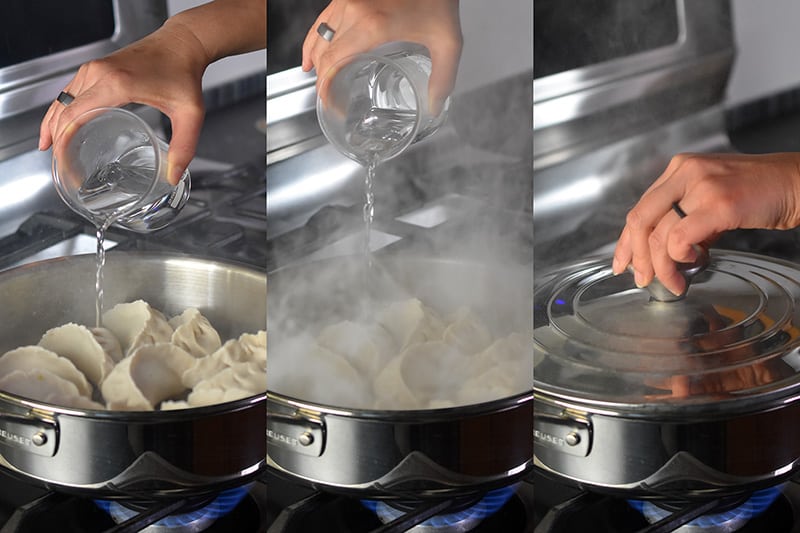
When the timer goes off, remove the lid and continue cooking a minute or two to evaporate any remaining liquid and to re-crisp the bottom of the potstickers.
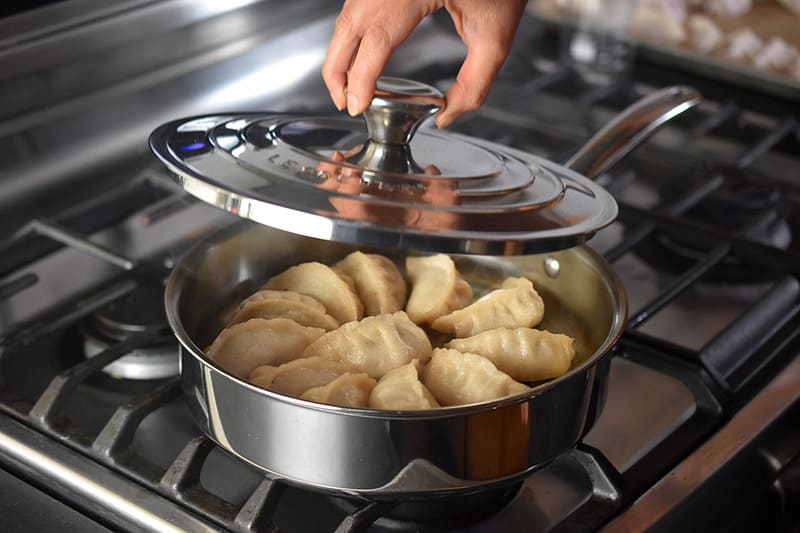
Carefully transfer the finished pot stickers to a platter and repeat the process until you’re finished. Tell your family to eat the pot stickers as soon as they’re done because these dumplings taste best hot!
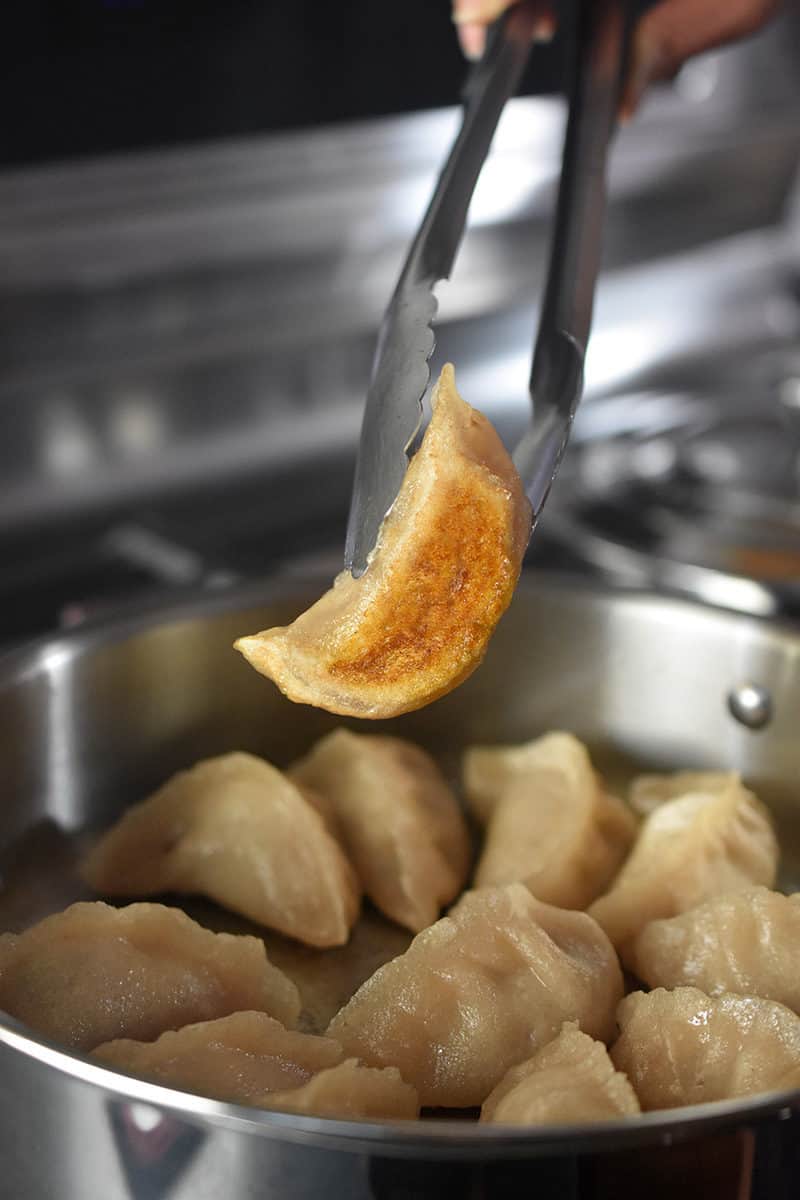
These Paleo Pot Stickers taste great plain, but I like to dunk them into a zingy and spicy dipping sauce. Here’s a paleo dipping sauce that takes only a couple minutes to throw together. Simply mix together rice vinegar, coconut aminos, and toasted sesame oil in a measuring cup. Want it spicy? Stir in some Paleo Sriracha or crushed red pepper flakes.
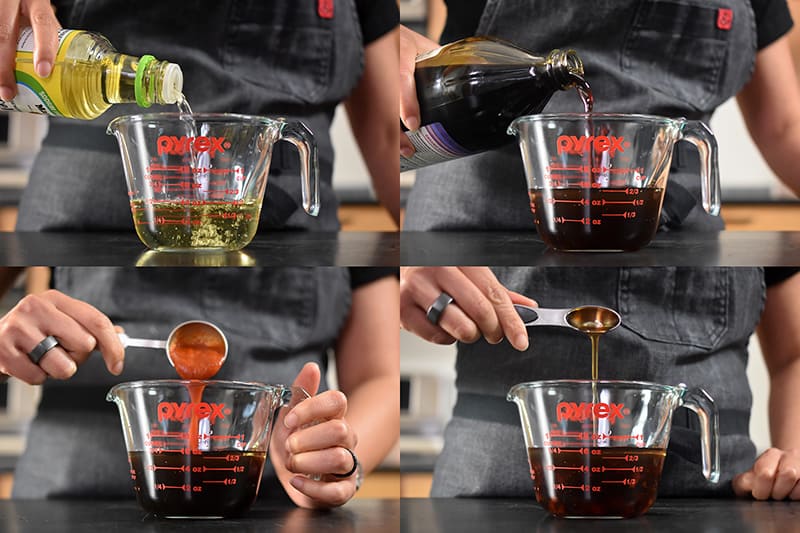
If you have All-Purpose Stir-Fry Sauce in your fridge, you can use that as a dipping sauce, too!
Serve the Paleo Potstickers with whichever dipping sauce you prefer, and stuff your faces. Only fry as many pot stickers as you’re gonna eat and freeze the rest—you’re gonna want to have some in your freezer to fry up when you next have a hankering for Chinese dumplings!
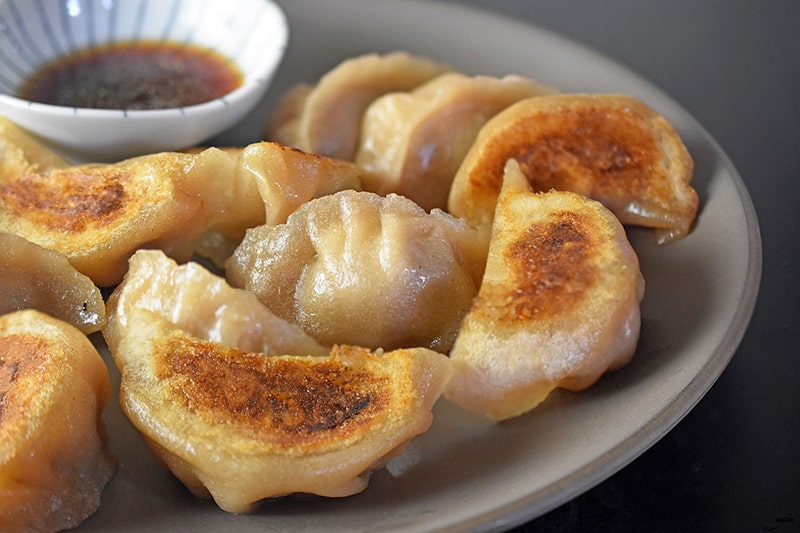
Seriously: who can resist a plate of juicy, pan-fried Paleo Pot Stickers?
More paleo Asian appetizer recipes
Looking for more recipe ideas? Head on over to my Recipe Index. You’ll also find exclusive recipes and in my cookbooks, Nom Nom Paleo: Food for Humans (Andrews McMeel Publishing 2013), Ready or Not! (Andrews McMeel Publishing 2017), and Nom Nom Paleo: Let’s Go! (Andrews McMeel Publishing 2022).
PRINTER-FRIENDLY RECIPE CARD
Authentic Gluten-free Potstickers (Paleo, Nut-Free, Grain-free, Soy-free)

Ingredients
Potsticker Filling
- 3 large dried shiitake mushrooms
- 1 pound Napa cabbage a small head
- 1 tablespoon Diamond Crystal kosher salt use half the amount if using Morton’s kosher salt or a fine grain salt, divided
- 1 pound ground pork
- ¼ cup chicken broth
- ½ cup minced scallions
- 1 tablespoon minced fresh garlic
- ½ teaspoon ground ginger
- ½ teaspoon ground white pepper
- 1 tablespoon coconut aminos
- 1 teaspoon toasted sesame oil
Wrapper Dough
- 3 cups cassava flour 3 cups = 384 grams
- ¾ cup arrowroot powder ¾ cup = 96 grams
- 1½ teaspoons Diamond Crystal kosher salt
- 2¼ cups boiling water
Cooking The Dumplings
- ¼ cup avocado oil divided
Dipping Sauce
- ½ cup rice vinegar
- ¼ cup coconut aminos
- 1 teaspoon toasted sesame oil
- 2 teaspoons Paleo Sriracha optional
Instructions
- Start by making the filling. Soak the shiitake mushrooms in a bowl with water for at least 30 minutes or until completely softened. You can also soak the mushrooms for up to 8 hours in the fridge.
- While the mushrooms are soaking, finely chop the Napa cabbage. (Yes, you can pulse it in a food processor if you don’t mind dirtying an appliance.) Combine the finely chopped cabbage and 2 teaspoons of Diamond Crystal kosher salt in a large bowl and toss well. (Only use half the amount of salt if using Morton’s kosher salt or a fine grain salt). Transfer the salted cabbage to a fine mesh strainer or colander and set it over a bowl. Let it stand at room temperature for at least 30 minutes or in the fridge for up to 8 hours.
- When you’re ready to make the filling, grab the soaked shiitake mushrooms and squeeze out the excess liquid. Remove and discard the tough stems and finely dice the caps.
- Dump the salted cabbage onto a large piece of cheese cloth or clean dish towel. Gather up the edges and squeeze and twist the cabbage bundle to wring out as much liquid as possible. You should end up with about 1 cup of cabbage.
- In a large bowl, use your hands to mix the ground pork with the chicken broth until the liquid is incorporated into the meat.
- Combine the pork/broth with the drained cabbage, mushrooms, scallions, minced garlic, ground ginger, ground white pepper, the remaining teaspoon of Diamond Crystal kosher salt, coconut aminos, and sesame oil. Use your hands to knead the filling until everything is well-mixed and the mixture starts to feel tacky and sticky.
- To check the seasoning, fry up a tiny patty of the meat mixture in a pan and taste it. Add more salt if needed. At this point, you can store the filling in a sealed container in the fridge for up to two days.
- When you’re ready to make the wrapper dough, measure out the cassava flour, arrowroot powder, and Diamond Crystal kosher salt and place them all in a large mixing bowl. Pour in about 2 cups of boiling water and stir it in. Once the water cools down enough to touch, use your hands to knead the dough.
- Continue adding a little boiling water at a time and knead it until you form a springy, not-sticky dough. If it seems extra dry, add a touch more water, but watch out—you don’t want a wet, soft dough, or you’ll have trouble working with it. If it gets too wet, knead in a bit more cassava flour.
- Divide the dough in thirds, and then divide each piece in half to get 6 dough balls. Next, divide each of the 6 dough balls in half, then in half two more times. If you followed my instructions correctly, you should end up with 48 equal-sized portions. (Split the dough ball into 3 balls → 6 balls → 12 balls → 24 balls → 48 balls)
- Cover the dough balls with a damp kitchen towel to keep them from drying out.
- Now, it’s time to grab your friends and family to help assemble the wrappers and pot stickers! Assign someone to portion out the fillings—this step may seem unnecessary, but it’ll ensure that you have exactly enough filling for the wrappers. Scoop out a scant tablespoon of filling and place the oval-shaped filling on a plate. Repeat until you have 48 equal oval-shaped Paleo Pot Sticker fillings.
- Next, let’s make the wrappers! Grab a tortilla press, some parchment paper, a rimmed baking sheet, a damp kitchen towel, and a small bowl of water. Take one of the dough balls and dab it with a little water if it feels dry. Then, use your hands to roll it into a round ball.
- Place the dough ball on the tortilla press in between pieces of parchment paper, and smush it flat. The wrapper should be very thin and about 3½-inches in diameter.
- Put the pre-scooped filling into the middle of the wrapper. Make sure your fingers are clean or it’ll be hard to fold properly. Fold up the sides of the wrapper around the filling like a taco. Use your thumb to keep the filling in place and use your other hand to crimp one side of the pot sticker as you seal the top. Continue pleating only one side of the wrapper and sealing the top of the pot sticker until you reach the other side. Use your fingers to securely seal the top of the pot sticker, dabbing on a little water if the edges feel dry. The finished pot sticker should have a flat bottom and form a crescent with the pleats on the outside.
- Place the pot stickers on a parchment lined rimmed baking sheet and cover them with a damp kitchen towel to keep them from drying out. Continue making wrappers and wrapping pot stickers until you are finished. You should end up with 48 Paleo Pot Stickers!
- At this point, you can either freeze the pot stickers or fry them up. I freeze mine in a food-safe freezer bag, making sure they’re in a single layer. You can keep the dumplings in the freezer for up to 2 months, and then fry them directly from the freezer when you’re ready to eat.
- Now it’s time to fry up the pot stickers! Heat a 10-inch heavy-bottomed skillet over medium-high heat. When the pan is hot, swirl in a tablespoon of avocado oil or your favorite high temperature cooking fat. Place as many pot stickers into the pan that’ll fit in a single layer.
- Fry the pot stickers until the bottoms are golden-brown, about 2 minutes.
- Carefully pour in a ½ cup of boiling water, and cover the skillet with a tight-fitting lid. Turn the heat down to medium and steam-fry the Paleo Pot Stickers for 5 minutes (7 minutes if cooking from frozen).
- When the timer goes off, remove the lid and continue cooking a minute or two to evaporate any remaining liquid and to re-crisp the bottom of the pot stickers.
- Carefully transfer the finished pot stickers to a platter and repeat the process until you’re finished. Tell your family to eat the pot stickers as soon as they’re done because they taste best hot!
- Time to make the dipping sauce! Simply mix together rice vinegar, coconut aminos, and toasted sesame oil in a measuring cup. Want it spicy? Stir in some Paleo Sriracha or crushed red pepper flakes.
Notes
- Read the FAQs and all the recipe steps before starting.
- You can make these pot stickers from start to finish in about 3.5 hours, but I think it’s better to break up the process into 2 days.
- It’s easiest to measure the flours with a kitchen scale.
- Get friends and family to help out!
- These Paleo Pot Stickers freeze well so make more than you think you’ll eat.
Nutrition
Nutrition information is automatically calculated, so should only be used as an approximation.
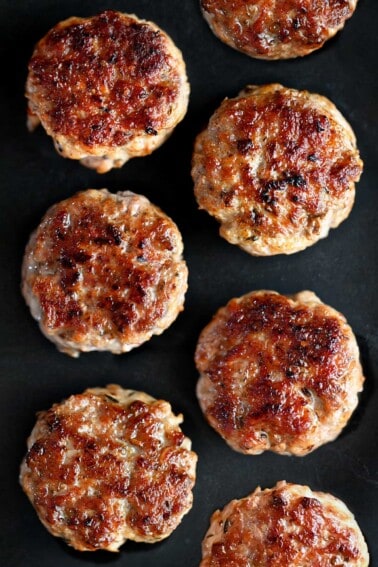
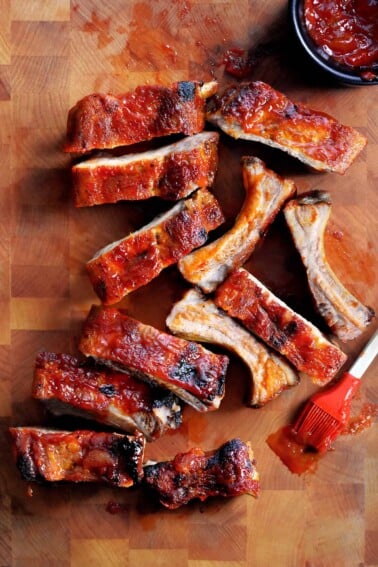

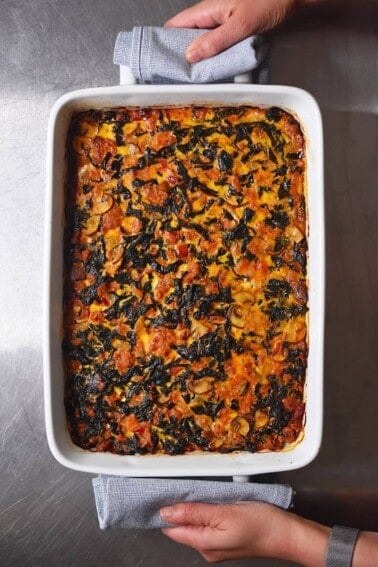
Divine! This is the third time I have made gluten-free dumplings, and the third recipe I have tried. The first one brought me to tears as I threw the mess in the trash. The second attempt with a different recipe was attempting to fail, but I managed to wrestle some rather ugly but edible dumplings from it, in sheer desperation for the yummy taste of ‘pot-stickers’ once again, after 20 years without. But the second I saw your recipe, with fabulous photos at every step, I knew this would be a winner! And what a winner it is-these are hands-down the best dumplings I have ever eaten. The flavor of the filling is incredible, and the dough easily allowed me to pleat to my heart’s content. My first couple were not going as well as I thought, so I carried the dumpling over to your photos of pleating, and thought, “where did she get all the fingers?”. And then I realized that I was trying to hold the dumpling in the palm of one hand, instead of holding it with my fingers and engaging all of them, and it became a breeze. I did what I do when I make tortillas, and cut up a freezer bag to have two sheets of plastic in the tortilla press. I also weighed the dough and divided it by 48 so that all the wrappers would be even. It took me 4 hours, but I knew it would, and boy, it was worth it! I took the cookie sheet with the finished dumplings and covered it with plastic wrap, and put it in the freezer until the dumplings froze and I could put them in one bag. Now I can have dumplings for breakfast, which is my favorite time to eat them. Thank you so much for this wonderful recipe; you have made me SO happy!
Can you sub tapioca flour in place of arrowroot?
An absolute hit! My family said they look like pierogi. Now I’m wondering if I could use the dough recipe for pierogi?
Do you think I could make the wrappers a couple of hours ahead? I know you said they’ll get hard in the fridge, but if I keep them on the counter between damp towels, would they be okay for a bit?
Hmmm…I really think the dough is best made fresh but it probably would be okay they way you describe.
I haven’t made these yet but am dying to try! I am wondering, about how big should the flattened potsticker be before stuffing? Also, if I am interested in tortilla press, I noticed they come in different sizes. Which size is best for potstickers, empanadas, and homemeade tortilla making?
Thanks in advance!
Hi Chris,
You will want an 8 inch tortilla press, that will do the job. Your wrapper should be about 3 1/2 inches in diameter.
Hi, is there a substitute that works for cassava flour?
I haven’t tried a substitute myself, but I have heard a 1:1 gluten free flour will work.
I am making these tomorrow, the dried shiitake I bought has 0.5 ounces. They are really smao, how many ounces do I need?
I use ~10 grams in the recipe and 0.5 ounces is around 15 grams. You can use most of the package!